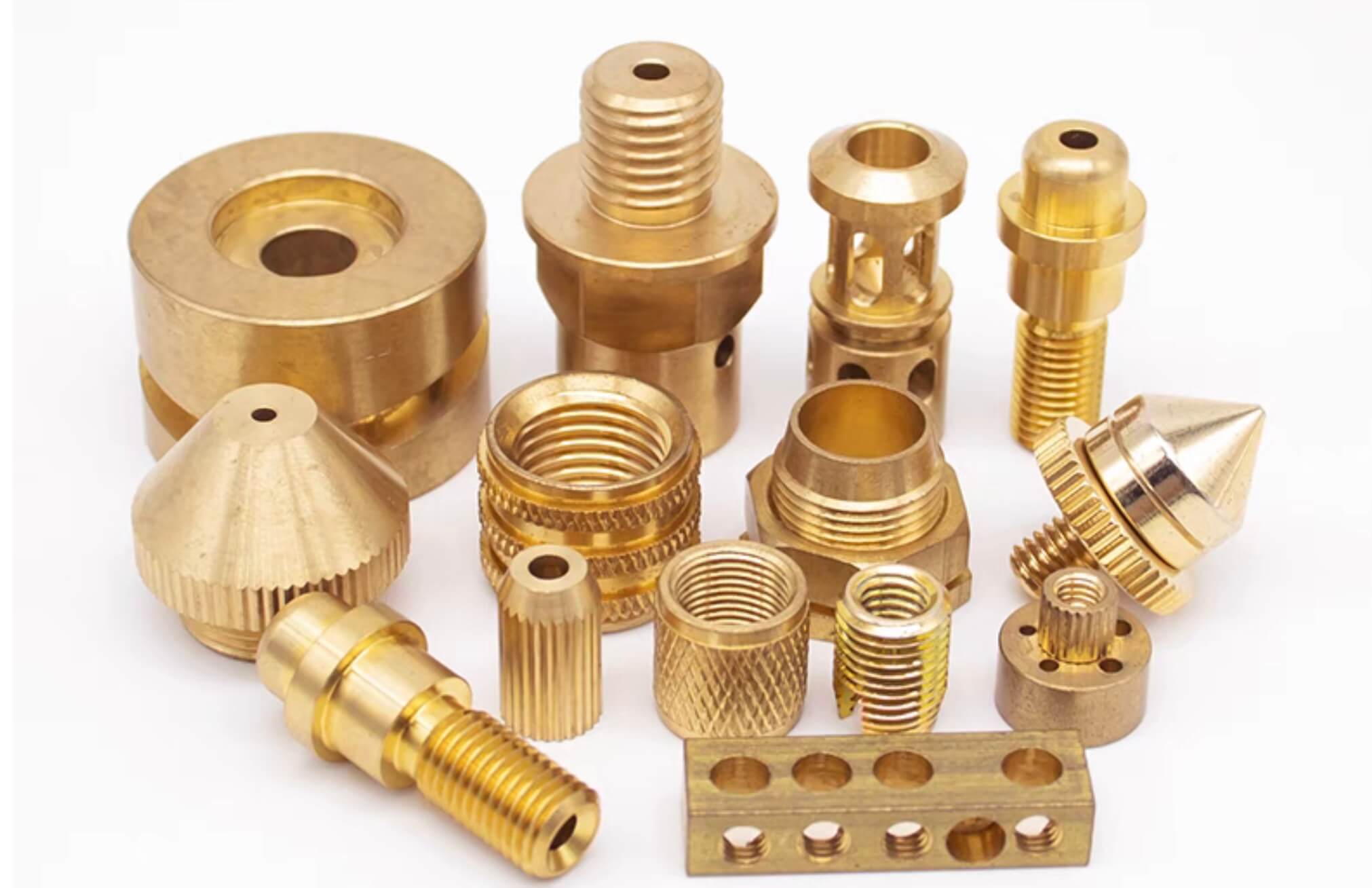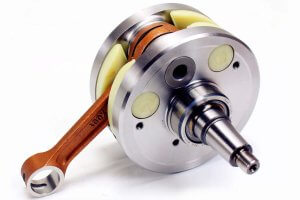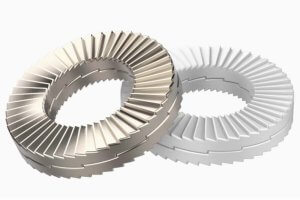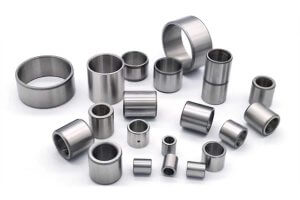Introduction
Annealing brass is a key process in CNC machining, as it enhances machinability and improves the final quality of parts. Brass, an alloy primarily of copper and zinc, is widely used in industries such as automotive, aerospace, musical instrument manufacturing, and architecture due to its excellent workability and aesthetic appeal. When brass undergoes annealing, its properties change in ways that directly benefit CNC machining—making it softer, more ductile, and more resistant to cracking.
From my own experience, I’ve found that annealing brass allows for smoother machining processes, reduces tool wear, and helps achieve precise geometries with minimal defects. This article will explore why annealing brass is essential in CNC machining, covering everything from the science of annealing to specific machining parameters and real-world applications.
Basics of Annealing Brass
Annealing is a heat treatment process designed to improve material ductility and reduce hardness. For brass, annealing is particularly valuable because it relieves internal stresses, allowing for easier manipulation without compromising structural integrity. Understanding the fundamental science of annealing helps machinists and engineers optimize this process for the specific needs of CNC machining.
The Science of Annealing Brass
Annealing brass involves heating it to a specific temperature, holding it at that temperature, and then cooling it slowly. This process alters the microstructure of brass, specifically by allowing the crystal grains to reform in a stress-free arrangement. For brass, typical annealing temperatures range from 450°C to 600°C. These temperatures vary slightly based on the alloy composition and the specific properties desired in the final component.
| Phase | Temperature Range | Duration | Purpose | Result |
|---|---|---|---|---|
| Heating | 450-600°C | 30 minutes – 2 hours | Softens brass and realigns crystals | Reduces hardness |
| Holding | Depends on thickness and alloy | Maintains uniform heat distribution | Ensures complete transformation | |
| Cooling | Slow air cooling | Controlled | Prevents brittleness, increases ductility |
The effect of annealing is most notable in the increased ductility of brass, which makes it ideal for components requiring precise shaping. This ductility also prevents cracks and defects during machining, a critical factor when working with complex designs or thin-walled parts.
Changes in Properties After Annealing
Before annealing, brass tends to be harder and more prone to brittle failure. This characteristic can limit its usefulness in CNC machining, where flexibility and resistance to cracking are often essential. Annealing addresses these issues by modifying key properties:
| Property | Unannealed Brass | Annealed Brass |
|---|---|---|
| Hardness | Higher | Reduced |
| Ductility | Lower | Increased |
| Brittleness | Prone to cracking | Reduced risk of cracking |
| Workability | Limited flexibility | High flexibility |
The enhanced workability after annealing allows for more complex and precise machining, making it a preferred treatment step for many brass applications.
CNC Machining of Annealed Brass
The properties imparted by annealing have a direct impact on CNC machining, affecting everything from cutting speed to tool wear. Annealed brass is softer and more ductile, allowing for faster cutting speeds, increased feed rates, and reduced wear on tools. In practice, these benefits translate to higher efficiency, better surface finishes, and cost savings in tool maintenance.
Optimization of Cutting Speed, Feed Rate, and Depth of Cut
Working with annealed brass allows machinists to push machining parameters without risking damage to the workpiece. In my projects, I’ve consistently seen that annealed brass handles higher cutting speeds and feed rates effectively. However, it’s important to optimize the depth of cut to maintain the structural integrity of the brass and prevent potential deformation or work hardening.
| Parameter | Recommended Range (Annealed Brass) | Effect on Machining Quality |
|---|---|---|
| Cutting Speed | 120-150 m/min | Faster cuts, reduced heat buildup |
| Feed Rate | 0.1-0.3 mm/rev | Smooth surface finish, less wear |
| Depth of Cut | 1-3 mm | Maintains shape without stressing material |
Tool Selection and Wear Reduction
Because annealed brass is softer than its unannealed counterpart, it doesn’t wear down tools as quickly, allowing for longer tool life. Standard carbide and high-speed steel tools are typically sufficient for machining annealed brass, although advanced tool coatings (like TiN or TiCN) can provide additional wear resistance and are recommended for large-scale production runs.
In a project involving intricate brass connectors, I observed that switching from unannealed to annealed brass extended tool life by nearly 30%. This change reduced downtime for tool replacements and contributed to an overall cost reduction. Additionally, the finished components had a noticeably improved surface quality, with fewer imperfections and smoother finishes.
Achieving a Superior Surface Finish
Annealed brass’s improved machinability allows for smoother cutting and reduced tool chatter, resulting in a cleaner surface finish. This benefit is especially advantageous in applications where aesthetics and precision are critical. For instance, architectural brass fittings often undergo annealing to achieve the highest possible surface quality, allowing for intricate designs that maintain their appearance over time.
Common Tool Choices for Annealed Brass
| Tool Material | Coating Type | Durability with Annealed Brass |
|---|---|---|
| High-Speed Steel (HSS) | TiN | Moderate to High |
| Carbide | TiCN | High, recommended for long runs |
| Ceramic | Not necessary | High wear resistance, costly |
Industrial Applications of Annealed Brass
Annealed brass is widely used across industries due to its flexibility, machinability, and strength. The following are some key industries and applications that benefit from annealing brass:
Automotive and Aerospace Applications
In the automotive and aerospace sectors, brass components are used for connectors, bushings, fittings, and other structural elements. These components must withstand high stress and precision requirements, making annealed brass an ideal choice due to its reduced brittleness and increased flexibility.
- Case Study: In an aerospace application, annealed brass fittings were used in hydraulic systems that operate under extreme pressure. The annealed brass withstood these conditions without cracking, which would have been a risk with unannealed brass. This choice resulted in longer part life and reduced maintenance needs.
Musical Instrument Manufacturing
Brass is essential in musical instruments like trumpets, saxophones, and trombones, where sound quality and durability are crucial. Annealing brass improves its malleability, allowing it to be formed into precise shapes without internal stresses that can affect tonal consistency.
- Example: During a project with a musical instrument manufacturer, we found that annealing brass tubing helped achieve a more resonant, consistent tone. The annealed brass was easier to shape into complex curves required for the instrument, and the final product exhibited a warmer, richer sound quality.
Architectural Decoration and Hardware
Annealed brass is widely used in architecture for decorative elements, fixtures, and structural components. The material’s malleability after annealing allows for detailed engravings, shaping, and bending without compromising the durability of the component.
| Industry | Typical Application | Benefit of Annealing Brass |
|---|---|---|
| Automotive | Electrical connectors, fuel systems | Improved formability, reduced cracking |
| Aerospace | Fittings, small structural components | Enhanced durability, better precision forming |
| Musical Instruments | Trumpets, saxophones | Smooth shaping, improved sound quality |
| Architecture | Decorative fixtures, hardware | Flexibility for intricate designs, durability |
Conclusion
Annealing brass is a transformative step in CNC machining, enhancing brass’s ductility, reducing hardness, and improving machinability. From aerospace and automotive applications to musical instruments and decorative architecture, annealed brass offers unmatched advantages, helping industries achieve precision, durability, and quality in their final products.
The importance of annealing in brass machining is clear: it extends tool life, improves surface quality, and supports complex shapes. As CNC machining advances, understanding how to utilize annealed brass will remain essential for machinists and engineers aiming to achieve top-quality results with maximum efficiency.
FAQ
- What is the optimal temperature for annealing brass?
Brass is typically annealed at temperatures between 450°C and 600°C, depending on its alloy composition and the specific properties desired. - How does annealing affect brass’s ductility and hardness?
Annealing increases brass’s ductility and reduces its hardness, making it more workable and less likely to crack under stress. - Do I need specialized tools for machining annealed brass?
Not necessarily. While annealed brass allows for standard tools, it does improve tool life and finish quality, making specialized tooling unnecessary. - How can I determine if brass components need annealing?
Brass components prone to cracking during forming or machining generally benefit from annealing to enhance their ductility and formability. - What is the advantage of annealed brass in musical instrument sound quality?
Annealed brass produces a more consistent tone and richer sound due to the material’s reduced internal stresses. - Does annealing brass affect its electrical conductivity?
Annealing can slightly reduce brass’s electrical conductivity, but the change is minimal and typically negligible for most applications. - Does annealing increase the lifespan of brass parts?
Yes, by relieving internal stresses and improving ductility, annealed brass components are more resilient, reducing the risk of fatigue and extending their lifespan. - Is the cost of machining annealed brass higher than non-annealed brass?
While annealing adds initial cost, the reduced tool wear and improved machinability often lead to lower overall machining costs. - Is there a difference in waste when machining annealed brass?
Yes, machining annealed brass typically generates less waste, as smoother cuts and fewer defects mean fewer rejected parts. - What environmental considerations are associated with brass annealing?
Annealing consumes energy and may produce emissions, so optimizing the process to minimize energy use and ensuring proper ventilation can mitigate environmental impact.
Other Articles You Might Enjoy
- Comprehensive Guide to CNC Machining Brass Screws
Brass screws are widely used in various industrial and commercial applications due to their superior mechanical properties and attractive appearance. This article will delve into the characteristics of brass, the…
- The Future of CNC Machining Parts with Environmentally Friendly Brass Alloys
As industries strive to become more environmentally conscious, the materials used in CNC machining are evolving. One of the most significant changes in this domain is the shift from traditional…
- Precision CNC Machining of Steel: High-Volume Production
Precision CNC Machining and High-Volume Production As an integral part of modern manufacturing processes, Precision Computer Numerical Control (CNC) machining brings about unmatched accuracy and consistency in the production of…
- Material Versatility in CNC Machining: From Titanium to Thermoplastics
Introduction to CNC Machining CNC machining stands as a cornerstone in the manufacturing sector, enabling the precise creation of parts and components. This process utilizes computer numerical control (CNC) to…
- Brass CNC Machining: The Advantages of Using Brass in Custom Metal Fabrication and Prototyping
Introduction to Brass CNC Machining and Its Importance in Custom Metal Fabrication and Prototyping CNC machining, a digitally-powered manufacturing process that deploys pre-programmed computer software to manipulate tools' movement and…
- Brass Precision Prototyping: Leveraging CNC Machining for Quick Turn Machining Solutions
Introduction to Brass Precision Prototyping and CNC Machining In the realm of prototyping, brass precision and Computer Numeric Control (CNC) machining play significant roles. Brass precision prototyping is a process…









